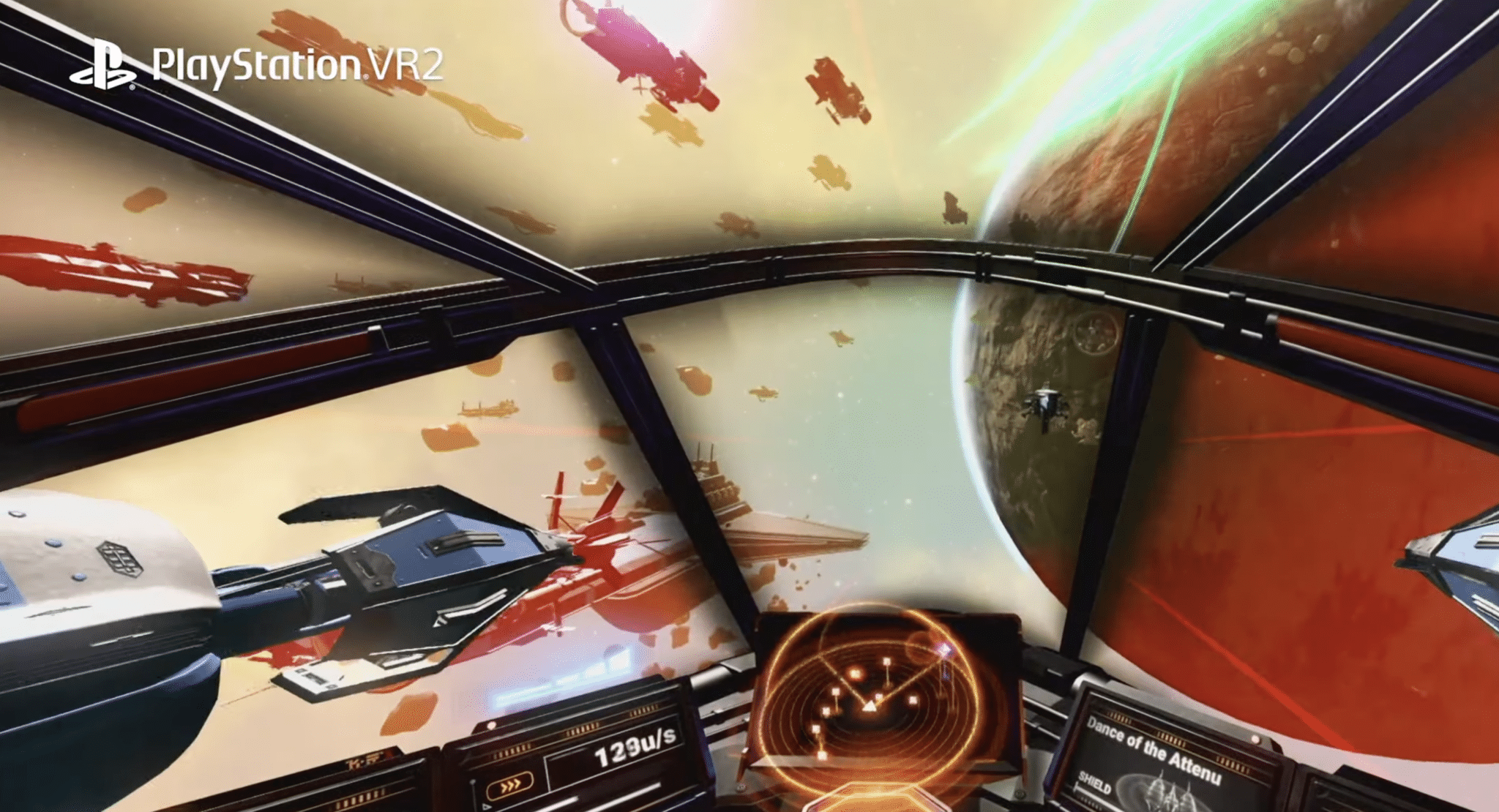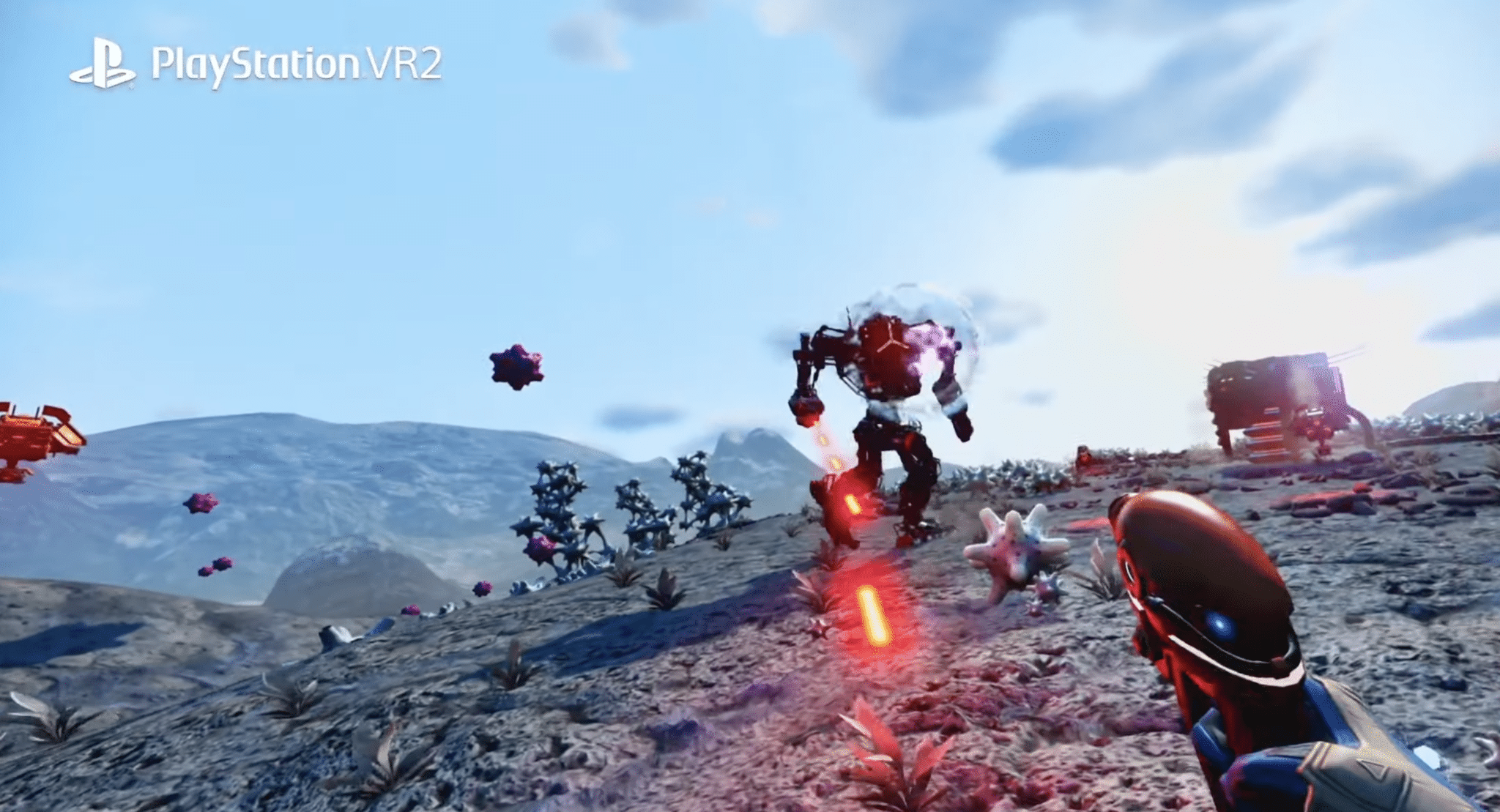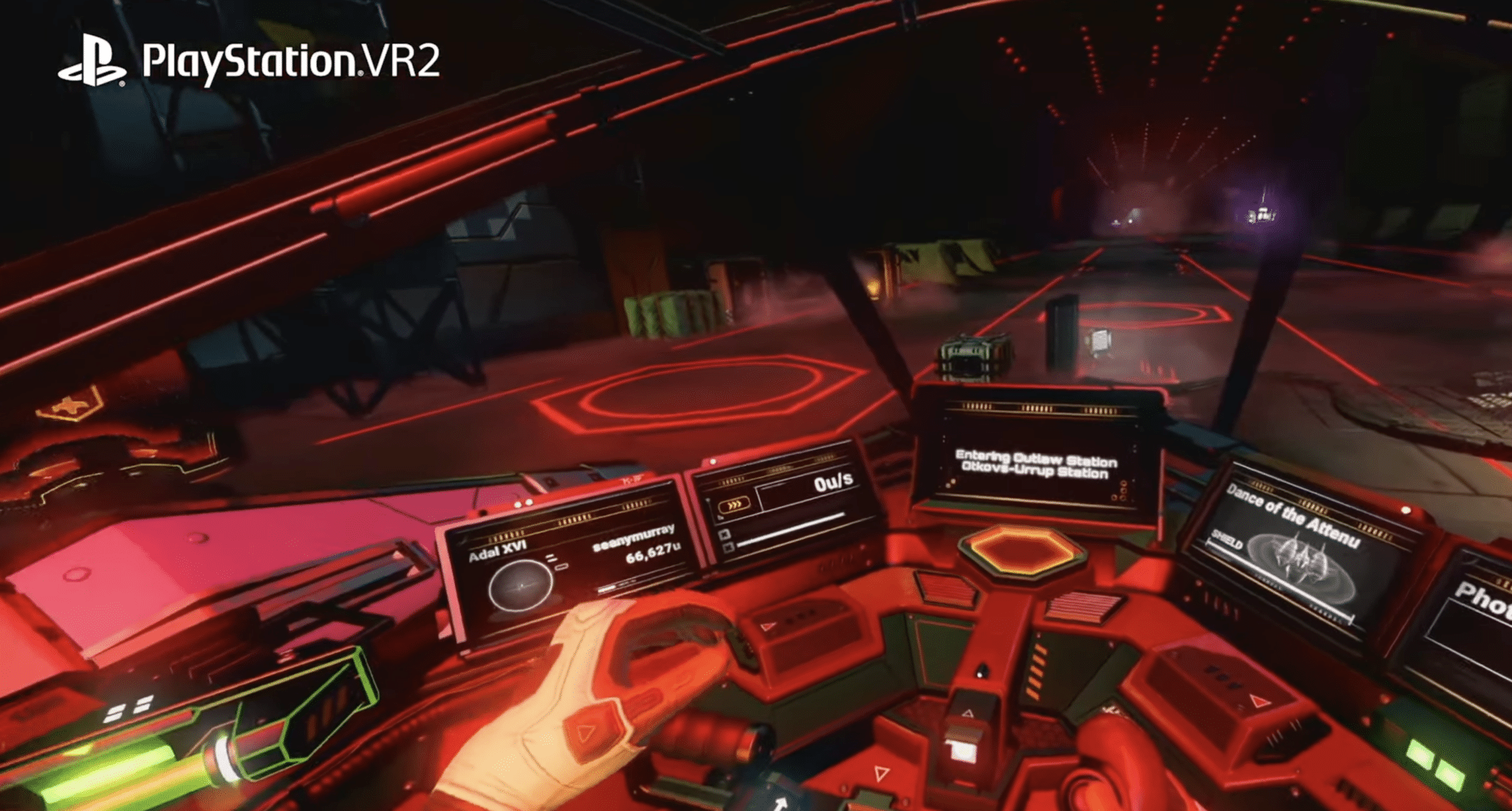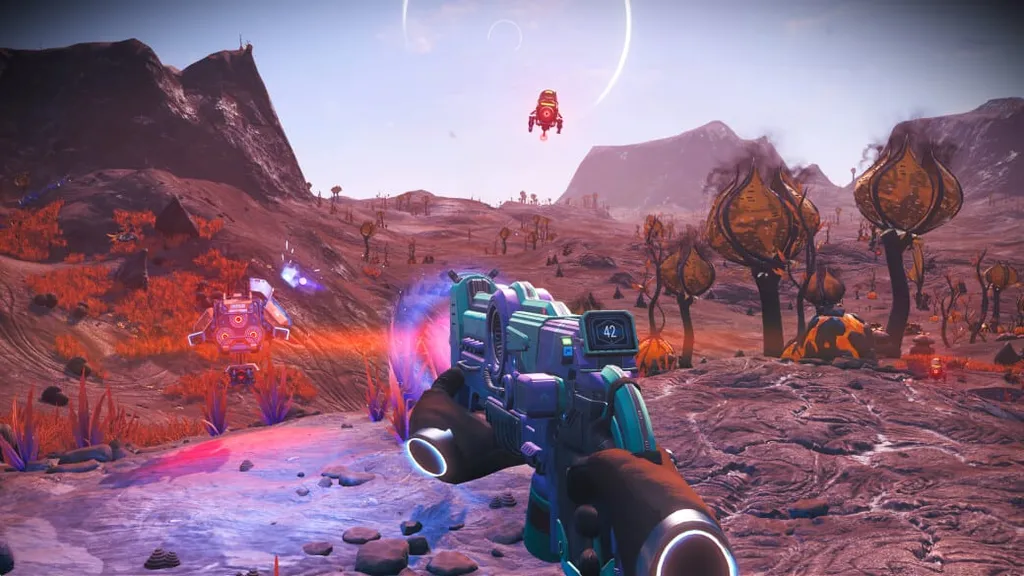No Man’s Sky added PS VR2 support to coincide with the headset’s launch last month, but how does the space sim hold up on the new headset? Read on for our full No Man’s Sky PS VR2 review.
After a rocky start with its initial launch in 2016, Hello Games’ procedurally generated space sim No Man’s Sky has become the poster child for video game comebacks. Hello Games worked tirelessly on update after update, not only bringing features that people were expecting at launch, but later vastly expanding beyond many players’ wildest dreams.
Platforms: PS VR2 (also available on PC VR, PSVR)
Release Date: Out Now
Developer: Hello Games
Price: $60
In 2019, Hello Games added full VR support for No Man’s Sky, which we reviewed on PC VR headsets and the original PSVR for PS4. In February 2023, Hello Games launched the latest update, codenamed Fractal, bringing support for PS VR2 to the PS5 version of the game. With that in mind, we’re here to give you our updated thoughts on what’s been added to the game over the past few years and how No Man’s Sky runs on PS VR2.
For those who aren’t familiar, No Man’s Sky is a space adventure and survival sim, taking place in a procedurally generated infinite galaxy. You start out as an amnesiac astronaut, crash landed on an unknown planet. Your first goals are simple: charge up your life support and fix your equipment. Shortly after, you have a small ship to repair and then you can get out into space and visit other planets, space stations and then start to hop between solar systems. During the opening hours of the game, you’ll also be introduced to the base-building systems, alien races to trade and communicate with and much more.
I played and enjoyed No Man’s Sky at launch, but ended up putting the game down after around 20-30 hours as it started to get a bit same-y. I was just jumping from solar system to solar system, winding my way towards the centre of the universe and the current end of the basic story. Returning to the game for the Next Generation update at launch on PS5 and Xbox Series X, I found that the game was packed to the brim with new things to do, new features and new possibilities. It still felt like the same game at its core, but with a lot more polish.

New Frontiers
The latest Fractal update brings PS VR2 support, but also an increase in texture quality, draw distance and added reflections when playing in VR mode for both PS VR2 and PC. Hello Games has also added some PS VR2 specific features, such as haptic support for the Sense controllers and headset itself. You can also now use the capacitive sensors in the trigger and grip buttons to perform gestures like pointing, waving or giving a thumbs up when in multiplayer. It even makes using the menus in PS VR2 feel very natural – you can point with one hand a new wrist-mounted menu that, so you stay immersed in the world and feel like a proper sci-fi explorer. The vibration on your headset is great for immersion too, subtly rumbling when you leave planetary atmosphere or when a large animal or vehicle is moving close by.
Something that’s been added to all platforms with the Fractal update is new VR-specific interactions, like physically pulling open your canopy to exit your ship or grabbing and pulling various plant life and organic matter out in the world instead of just simply clicking on it. The grabbing interaction is especially forgiving on distance too, so if you undershoot your teleport you don’t have to re-position to interact with an object.
There’s been other updates along the way to the Next Generation and Fractal updates, adding everything from walking mechs, living ships for you to fly and animal companions for you to tame. They’ve also overhauled many aspects of the game, completely redoing the story and new player experience. Safe to say it’s a hugely different game, even when compared with the original VR support from 2019.
The biggest change for me was the new story experience and the redesigned space stations. My memory of space stations in No Man’s Sky was a sterile and small environment that might have one or two NPCs sitting behind desks. Coming back after the updates, I was immediately impressed to see much more going on in these stations. At one point, I even came across an abandoned capital ship drifting in space, looking like some sort of Aliens-style horror story in space. I didn’t have the right gear to get very far, but it’s encouraging to see opportunities like this arise naturally during exploration.

Touch The Sky
While not a complete VR novice, I had mostly played party games or smaller, more contained experiences before PS VR2, so booting up No Man’s Sky in VR for the first time was an experience like nothing else.
In basic terms, No Man’s Sky’s gameplay loop is unchanged between flatscreen and VR – saves are even compatible with both VR and flatscreen mode, so you can take an old save and start it up in VR or vice versa. However, it’s the added immersion that’s the biggest change when playing in VR. People often talk about the PS4 Spider-Man game as being a game that made you really feel like Spider-Man, but it wasn’t until playing No Man’s Sky on PS VR2 that I really felt like I was on another planet. There’s a pretty instant wow moment when you log in for the first time – I just stood still and spun around looking at the starting planet that the game had generated for me. While exploring my immediate surroundings, a massive capital ship warped into orbit above me and slowly flew across the planet. Details like that really ground the experience and make the world feel alive, giving the procedurally generated planets more of a sense of place than other PS VR2 experiences I’ve tried.
Comfort
No Man’s Sky on PS VR2 offers a teleport movement system as default, with snap (or smooth) turning mapped to the right analogue stick. There’s also the option for artificial stick-based movement, as well as options for vignetting to minimize nausea. When you land in water or use your jetpack, you will have to use the stick-based artificial movement, as there’s no teleport option for those situations.
Compared to other PS VR2 launch titles, one of the biggest things that No Man’s Sky has going for it is the simple lack of boundaries and the abundance of open space. You truly can point at a mountain, and then go there. It might take you several hours on foot or a few seconds in your ship, but everywhere from the top of the highest mountains to the bottom of the ocean is accessible. It makes No Man’s Sky stand out from prettier but more guided and linear experiences like Horizon: Call of the Mountain.
While I am pretty much in love with the experience of playing No Man’s Sky on PS VR2, it is a little graphically disappointing. I was hoping that the power of the PS5, combined with PS VR2’s OLED screen and foveated rendering capabilities, would help the game look just as incredible in VR as it does on flatscreen. Unfortunately, that’s just not the case.
Visually, it is nonetheless a huge step up from the PS4 version for PSVR and the game still looks good, but it can sometimes seem a little blurry. Specifically, texture quality and the game’s resolution is sometimes quite low in-headset, meaning it’s just not as good to look at compared to the regular flatscreen mode. Hello Games seemingly hasn’t taken advantage of the PS VR2’s foveated rendering capabilities at all, though there has been some outreach from the community requesting it. In terms of performance, I never had any issues while playing on PS VR2, though I would say that’s to be expected from a seven year old title.

No Man’s Sky PS VR2 Review – Final Verdict
Everything we said about the original VR version of No Man’s Sky is still true on PS VR2 – you get an essentially endless, infinite universe to explore and a sense of scale that’s really hard to match in VR. While it’s still an upgrade compared to the original PSVR release, there’s nonetheless room for improvement in the visuals department. However, new enhancements for PS VR2 make the game more immersive than ever, resulting in one of the best space survival sims available in VR. .
If you’ve ever wanted to leave your universe behind and have a space adventure from the comfort of your living room, I can’t think of a better way to do it than with No Man’s Sky on PS VR2.

UploadVR focuses on a label system for reviews, rather than a numeric score. Our reviews fall into one of four categories: Essential, Recommended, Avoid and reviews that we leave unlabeled. You can read more about our review guidelines here.


























